NI 100: Milltown Cemetery graves a reminder of a troubled century
- Published
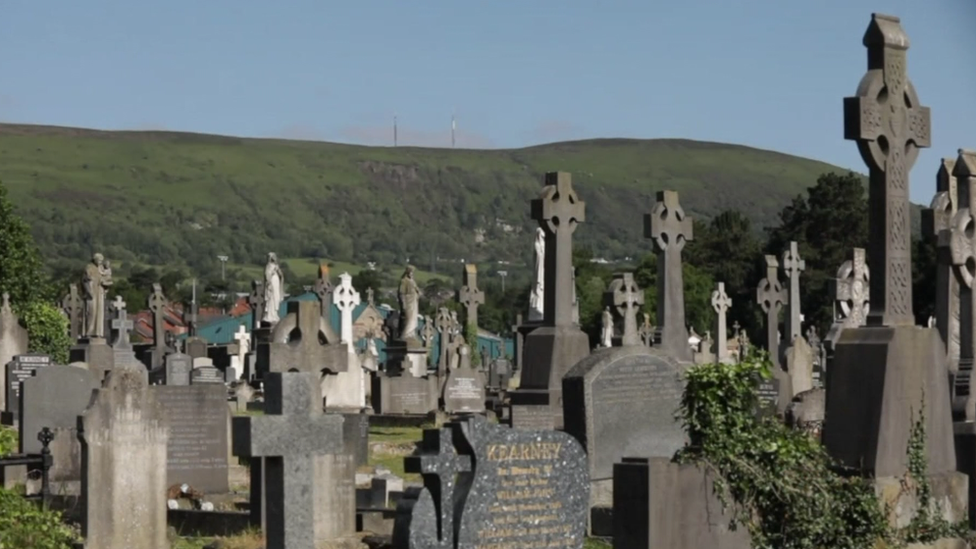
A walk around Milltown Cemetery tells many stories from Northern Ireland's troubled past
History does not travel in straight lines - it very often goes full circle.
If you take a walk around Belfast's Milltown Cemetery you will see what I mean.
For decades, the remarkable and sad stories of people caught up in conflict have been shaped in stone.
From the shootings and killings of the 1920s to the violence of the 1970s and 80s, this is a corner of the city where Northern Ireland's disputed history is on display.
The sprawling burial ground in west Belfast, established by the Catholic Church, provides a snapshot of a troubled century.
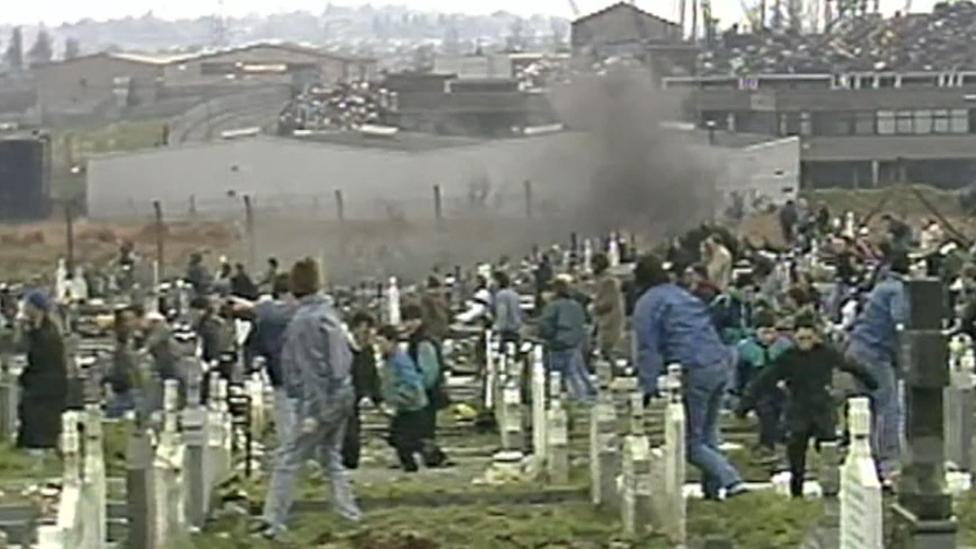
Loyalist paramilitary Michael Stone killed three mourners and injured others in a gun and grenade attack at the cemetery
Here you find the graves of IRA men and women, police officers, soldiers and civilians.
Their stories provide a poignant and personal narrative to a past that is often full of twists and turns.
Side by side
Take the case of Rosemary Bleakley, an 18-year-old woman from north Belfast who joined the IRA unbeknownst to her family.
On 13 January 1976, as part of an IRA unit, she was preparing to plant a bomb in Belfast city centre when it exploded prematurely.
She was killed along with Martin McDonagh, one of her accomplices in the IRA.
The blast also took the lives of two other people - shop owner Ian Gallagher and one of the shop workers, Mary Dornan from Andersonstown in west Belfast.
Rosemary Bleakley was buried in Milltown Cemetery two days after the explosion.
Although the teenager, who had just been awarded a place at university, was in the IRA, she was not buried in the republican plot.
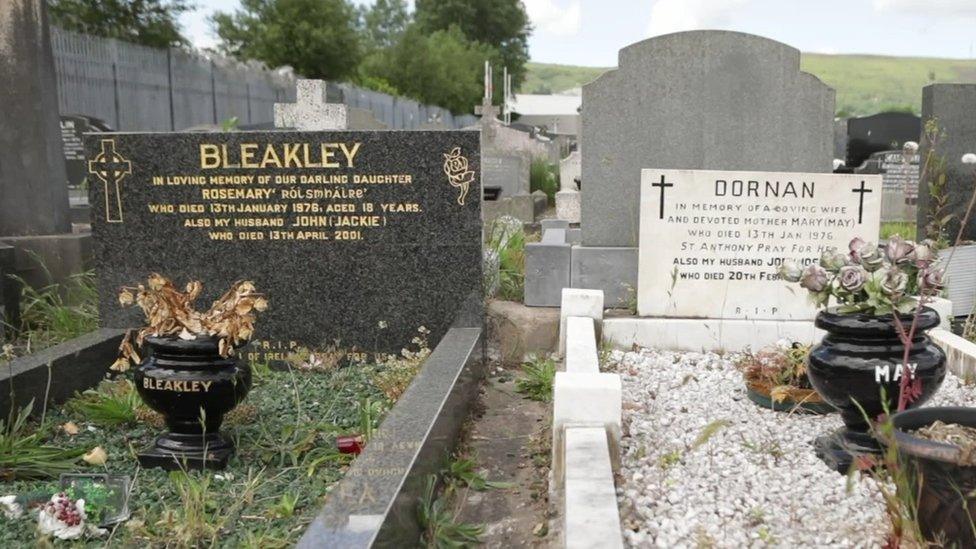
Rosemary Bleakley and Mary Dornan were laid to rest in adjoining graves
Her parents were shocked to discover she was involved with the IRA. Her grave carries no reference to her membership.
Mary Dornan, who was married with two children, was buried on the same day at Milltown.
In a twist of fate, the two women were laid to rest in adjoining graves.
Other victims of our troubled century lie close to each other at Milltown.
Back in 1920, Sean Gaynor, an IRA man, was shot by the Royal Irish Constabulary on Belfast's Springfield Road.
Sgt Christopher Clarke was involved in the raiding party on the IRA man's home and, in 1922, he was shot by the IRA.
He is buried within sight of Sean Gaynor's grave - their resting places are a few plots apart in a direct line.
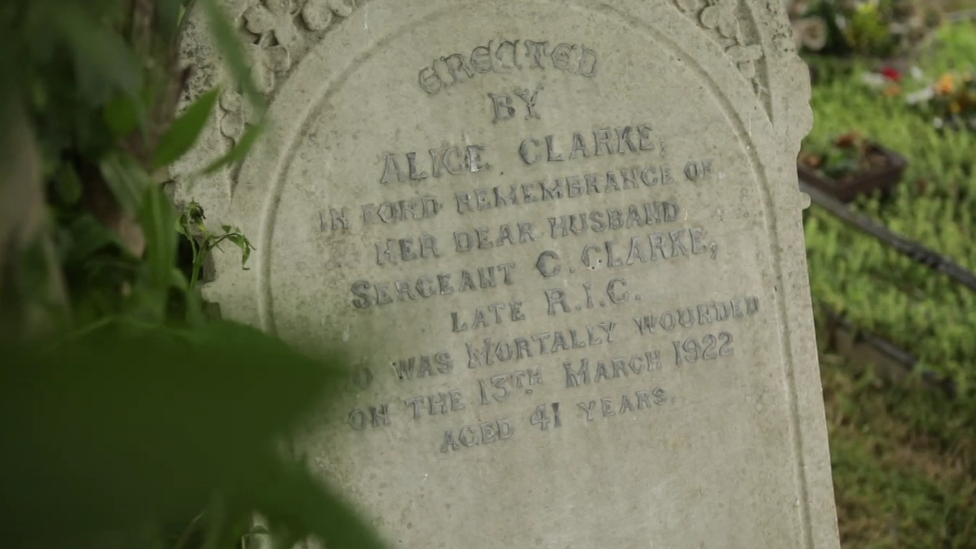
Sergeant Christopher Clarke is linked with Sean Gaynor in life and in death
The closeness of the graves has been highlighted by historian and author Tom Hartley who has chronicled the history of the cemetery.
He told BBC News NI the story of the two shows they were linked in death just as they were linked in life.
Complex narrative
Here at Milltown, soldiers and police officers are buried, as are IRA hunger strikers and political figures.
The connection to the British Empire looms large and there are memorials to the war effort, marking Belfast's soldiering tradition.
Victims of the Troubles are marked in many graves, with children and young people killed by the state and loyalists buried here.
You will also find the final resting place of Hugh McCabe, one of the first soldiers to die when violence broke out in the 1960s.
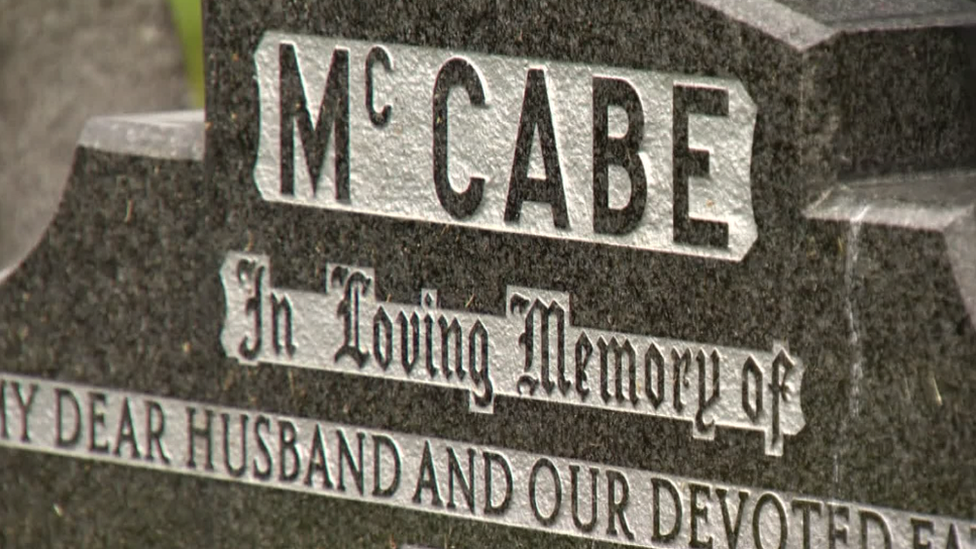
Hugh McCabe was one of the first soldiers to die when violence broke out in Northern Ireland in the 1960s
While on leave in Belfast from Germany in 1969, he was shot in disputed circumstances by the Royal Ulster Constabulary.
The cemetery made world headlines in 1988 - and provided some of the most shocking images of the Troubles - when loyalist paramilitary Michael Stone killed three mourners and injured others in a gun and grenade attack at a funeral for IRA members killed in Gibraltar.
This part of Belfast tells more than just the story of one community.
It provides an insight into our complex narrative, a narrative that cuts across families and timelines.
Over a century ago in 1920, just before Northern Ireland was created, IRA man Sean Gaynor was shot at his family home on Belfast's Springfield Road.
Fast forward to 1992, with the Troubles still ongoing, and Philomena Hanna was shot by loyalists at the very same address.
Two killings, seventy years apart.
A desperately sad reminder of our contested history, a history that twists and turns and very often collides.
Related topics
- Published22 June 2021
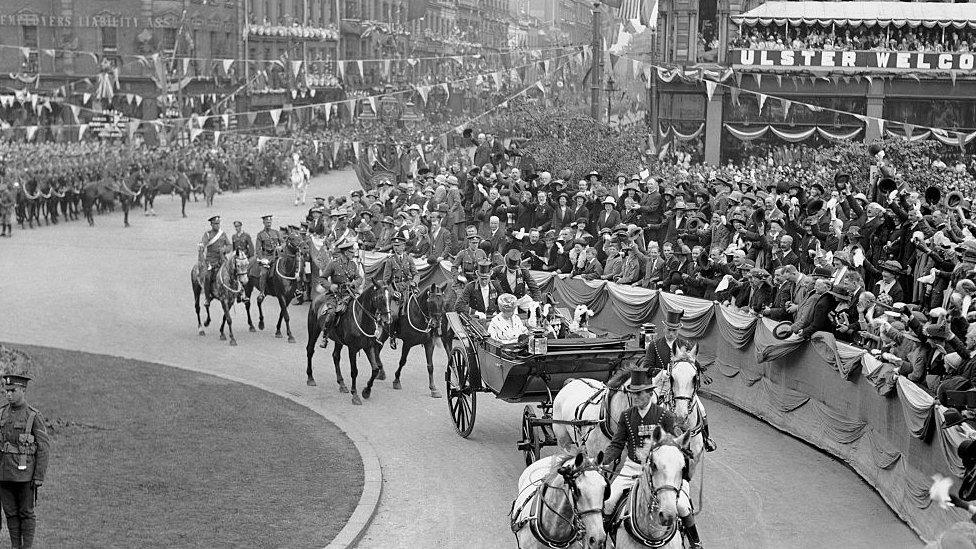
- Published22 June 2021
